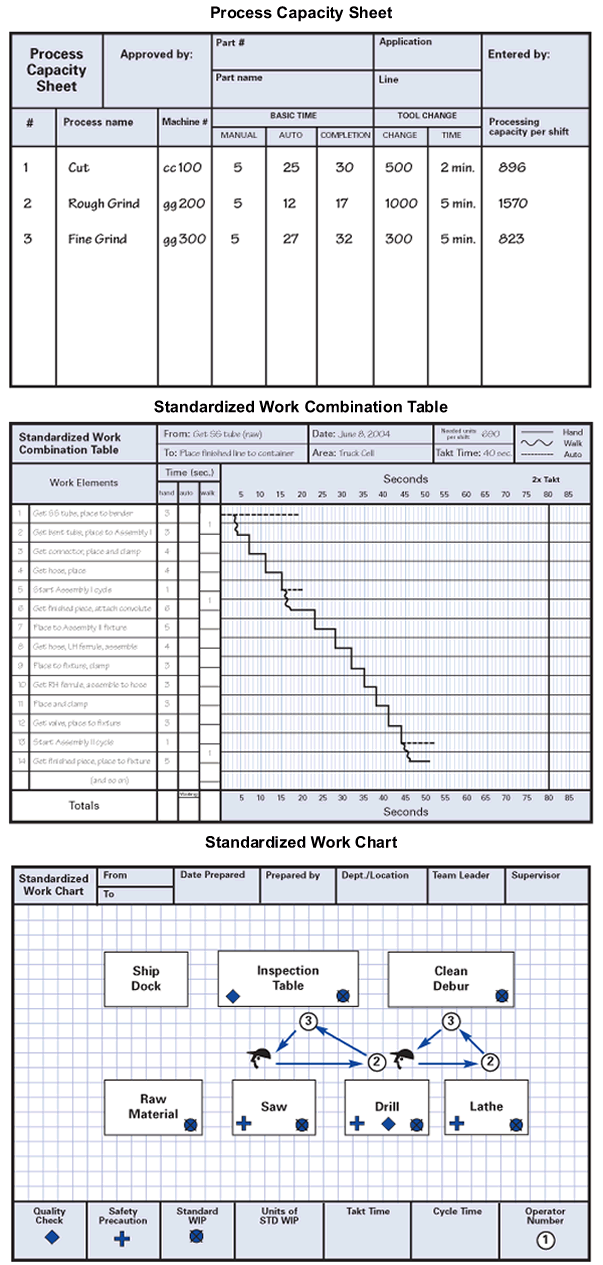Standardized Work
Establishing precise procedures for each operator’s work in a production process, based on three elements:
- Takt time, which is the rate at which products must be made in a process to meet customer demand.
- The precise work sequence in which an operator performs tasks within takt time.
- The standard inventory, including units in machines, required to keep the process operating smoothly.
Standardized work, once established and displayed at workstations, is the object of continuous improvement through kaizen. The benefits of standardized work include documentation of the current process for all shifts, reductions in variability, easier training of new operators, reductions in injuries and strain, and a baseline for improvement activities.
Three basic forms (shown in the illustration below) commonly are utilized in creating standardized work. These are used by engineers and front-line supervisors to design the process and by operators to make improvements in their own jobs.
- Process Capacity Sheet
This form is used to calculate the capacity of each machine in a linked set of processes (often a cell) in order to confirm true capacity and to identify and eliminate bottlenecks. This form determines such factors as machine cycle times, tool setup and change intervals, and manual work times. - Standardized Work Combination Table
This form shows the combination of manual work time, walk time, and machine processing time for each operator in a production sequence. This form provides more detail and is a more precise process design tool than the operator balance chart. The completed table shows the interactions between operators and machines in a process and permits the recalculation of operator work content as takt time expands and contracts over time. - Standardized Work Chart
This form shows operator movement and material location in relation to the machine and overall process layout. The form should show the three elements that constitute standardized work: the current takt time (and cycle time) for the job, the work sequence, and the amount of required standard in-process stock to ensure smooth operations. Standardized work charts often are displayed at workstations as a tool for visual management and kaizen. They are continuously reviewed and updated as the condition of the worksite changes or improves.
These standardized work forms typically are used in conjunction with two other worksite forms: The work standards sheet and the job instruction sheet. The work standards sheet summarizes a variety of documents that define how to build the product according to engineering specifications. Typically, the work standards sheet details precise operational requirements that must be adhered to in order to assure product quality.
The job instruction sheet—also called a job breakdown sheet or a job element sheet—is used to train new operators. The sheet lists the steps of the job, detailing any special knack that may be required to perform the job safely with utmost quality and efficiency.

